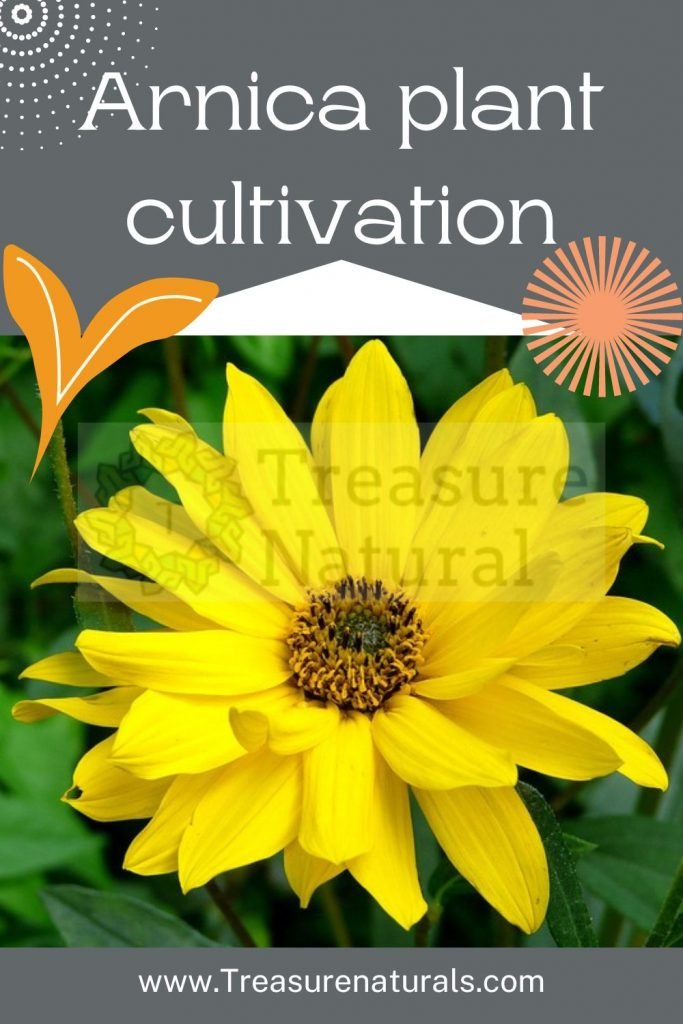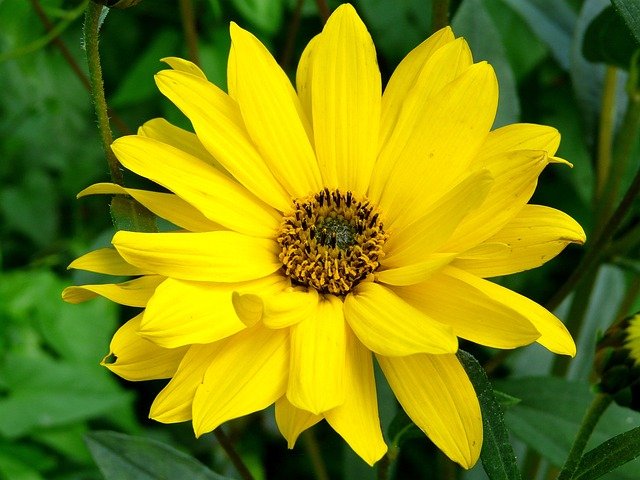
Arnica is a medicinal plant widely used as a natural remedy. Its cultivation is quite simple but it has particular cultural needs. Let’s get to know how to grow arnica profitably.
Arnica is a herbaceous plant of the Asteracea family and its botanical name is Arnica montana. It grows well throughout Europe and Asia especially in hilly and mountainous areas in a sunny exposure.
Arnica is currently a protected plant because with increasing urbanization and anthropization there are fewer and fewer areas suitable for its development and in this way we are risking losing the best natural habitats in which arnica grows.
This medicinal plant grows from 20 to 60 cm in height and blooms in yellow flower heads similar to large daisies. The flowering of the arnica occurs between the beginning of summer and the end of September.
The arnica flower harvest starts from the month of July and we will have to collect only the freshly opened flowers in order to have the maximum of active ingredients.
When the arnica blooms we can then collect the inflorescences, dry them in the shade and use it to obtain healthy products such as mother tinctures, herbal remedies and also for homeopathic formulations. In fact, arnica is a medicinal plant used in traditional medicine since ancient times and is still widely used today as a natural remedy.
Cultural needs of arnica
Arnica loves sunny and bright areas but fears excessive summer heat and drought. In fact, the ideal areas are hilly and mountain environments, perhaps even protecting the arnica with the shade of some nearby trees and shrubs.
The soil for arnica must be loose, with a slightly acidic pH and above all well drained. In fact, it is recommended to add a little expanded clay or pumice to the soil to have a better absorbency and distribution of water in the soil.
Arnica does not have great water needs, it will be enough to water it regularly for the first year and check that the soil remains cool even in summer .
Cultivating arnica
Arnica can be sown directly in the open field after the frosts have passed and spring begins. In case you want to prepare the seedlings, it is possible to sow in a protected seedbed already in autumn and then transplant the young arnica seedlings in the spring.
The seeds are placed on the ground or dropped with an average distance of 2 centimeters. Irrigation in this moment of germination is essential but we must not exceed the rot of the seed or young seedlings.
We can also grow arnica starting from the rhizome that will have to be divided to obtain new arnica seedlings. You will need a very sharp knife to cut the rhizome into parts and thus have more parts of rhizome with roots.
When we have to plant arnica, we need holes in the ground at least 30 centimeters away from each other. The best time to transplant is spring but also at the beginning of autumn it is indicated as the arnica seedlings will have more time to develop their roots and thus become stronger.
If we want to grow arnica in pots, it is possible and quite easy to do so, we only have to remember to add gravel or expanded clay to the bottom and above all remember to repot the arnica every 2 years.
What does arnica contain
Arnica has a phytocomplex composed of phenolic compounds , flavonoids such as essential oils , tannins and bitter substances such as sesquiterpenes lactones including helenaline.
These active ingredients have a strong anti-inflammatory action capable of decreasing the cascade process of inflammatory mediators thus avoiding the focus of inflammation from spreading or becoming chronic. Furthermore, helenaline has a direct action on cells, thus promoting the activity of our immune system.
The essential oils present in arnica have a disinfectant, expectorant, eupeptic action but above all they stimulate blood circulation and therefore support the cardiovascular system.
The active ingredients present such as flavonoids are also excellent antioxidants capable of reducing the action of free radicals responsible for cellular aging of the body.
Finally, the arnica also has a pain-relieving and anti-inflammatory action as well as having a good ability to eliminate bacteria harmful to our body.
When to use arnica

Arnica is used in the form of gel or ointment in cases of bruises, traumas, hematomas, muscle and joint pain, various kinds of inflammation and problems with the capillaries. Topical use is the best and the most recommended due to its direct effect on the affected areas.
The action on the skin of the arnica cream is specific in case of acne, insect bites, boils, rashes, inflammation of the skin, mouth and throat but also in case of phlebitis and fever.
Traumas and sprains are quickly resolved with the arnica-based cream thanks to its pain-relieving and anti-inflammatory action. In these cases, arnica is also recommended as a homeopathic remedy to be suspended every 2 hours after the trauma suffered.
In addition, topical arnica-based products are excellent for muscle pains in the back but also in the limbs and neck. Generally, arnica can also be inserted during a massage to help relax and recover after sports or other fatigue.
There are special patches to be applied on the body that gradually release the active ingredients of the arnica and are highly recommended especially for back and joint problems .
Finally, arnica can also be used as a stimulant of brain functions, as a tonic for the central nervous system and as a support for the immune system.
In the latter case, the mother tincture of arnica is the best remedy for gargling with an antiseptic effect and for oral use, obtaining the anti-inflammatory and stimulating benefits of the immune system.






